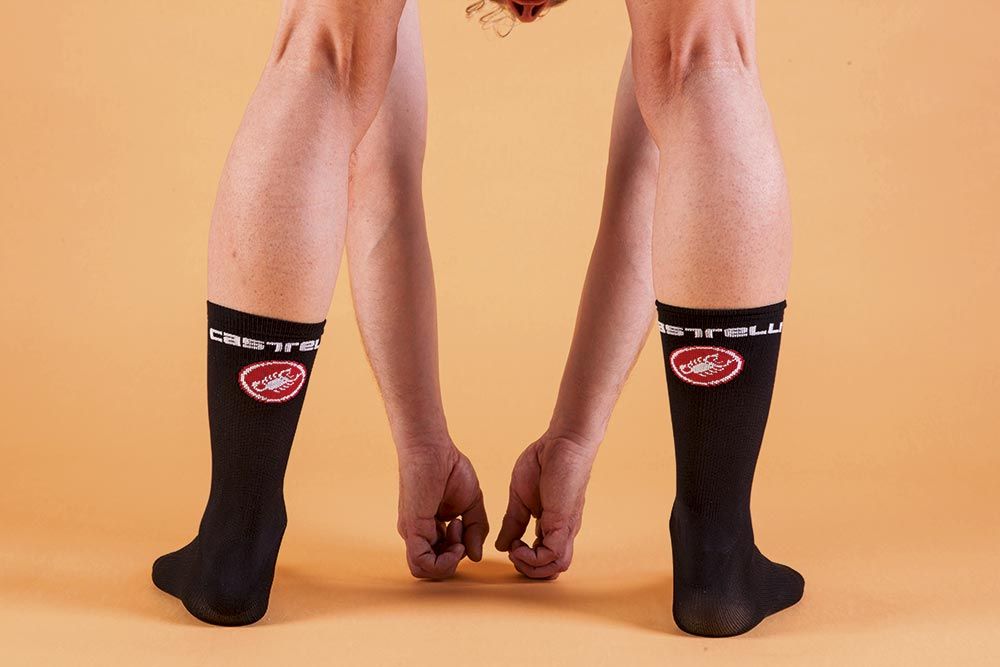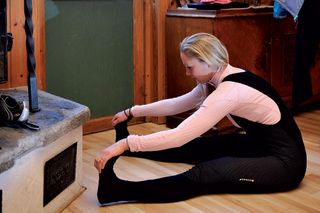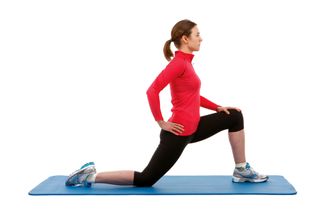Should cyclists stretch to prevent injury?
Does stretching maintain flexibility and prevent cycling injury? Or is it just a waste of time?


Long rides and intense training sessions invariably result in tight, achy legs. For most of us, this is interpreted as a sign that we’ve worked hard and challenged our body to adapt and get stronger. Usually these symptoms mean you have to take a day or two of rest or easy riding while your legs return to normal. The question is: can you prevent or alleviate muscle tightness and soreness by stretching?
First we should acknowledge that cyclists stretch for various different reasons: some to address post-ride tightness, while others regard it as a form of limbering up before a ride to allow greater flexibility and help prevent injuries associated with tendon tightness.
For a third group, their stretching routine is a ritual, simply a part of training that has become habit and which simply feels good as one element of ‘getting in the zone’ ready to ride. So that’s our second key question: are they on to something and actually benefitting, or are they wasting their time?
Unfortunately there is no straightforward answer to either question. The latest review of the research on stretching, published in December, looked at hundreds of studies examining the merits of stretching in various contexts (sporting and non-).
It’s worth pointing out that few studies have been conducted specifically on stretching among cyclists — the evidence mentioned here by no means provides the last word on the subject. One of the starkest findings in the review, apparent in several separate studies, is that static stretching before exercise seems to have a mildly negative effect on performance.
However, the review does note that, in most of the trials, exercise was begun three minutes after stretching, whereas in the ‘real’ world the delay between stretching and beginning a ride may be longer — and, if so, the negative impact is likely even smaller or negated completely.
Get The Leadout Newsletter
The latest race content, interviews, features, reviews and expert buying guides, direct to your inbox!
“Research has shown that static stretching may acutely reduce muscle strength,” says physio Tom Goom (thephysiorooms.com), “especially with longer holds, but this is a relatively small effect and may be prevented by including other exercises in the warm-up.”
Scant evidence

You might argue that a mild, short-term loss of strength is no major concern because you stretch primarily to prevent injury, rather than for performance reasons. However, here too, there is little evidence in support: in the aforementioned review, only two of the eight studies on total injury rates reported a benefit from stretching. There is also scant evidence that stretching helps prevent post-exercise muscle soreness.
Those who stretch often feel intuitively that the habit increases flexibility — not least because muscles seem to ‘loosen’ as you stretch. There is some evidence for stretching’s propensity to reduce stiffness and increase range of movement, but it is not conclusive. Some studies have indicated that these effects are short-lived, and the mechanisms responsible for the effects have not been identified.
>>> What’s the next big thing in training?
It’s also worth bearing in mind that cycling does not demand a very high degree of flexibility — aside from getting into a comfortable and moderately aerodynamic riding position (the latter more important for time triallists). For general road riding and sportives, most of us probably value comfort and injury prevention more highly than outright aerodynamic optimisation, and in which case, undergoing a bike-fit is likely to be more useful than self-prescribing an elaborate and painstaking stretching routine.
It is widely believed by physios nowadays that a dynamic warm-up is preferable to static holds, in that it seems to be more effective in increasing flexibility and possibly producing a small gain in performance too. In dynamic stretching, as the name implies, muscles are flexed through a range of movement rather than held for a prolonged period in a fixed position.
Dynamic v static
“Dynamic stretching is preferred pre-sport,” confirms Goom. “Static stretching, especially longer holds, may acutely reduce muscle strength. Though static stretching may improve flexibility, if that’s your objective, it’s best to do so as a separate session rather than as a warm-up.”
If you have a specific tightness or ache, stretching may help — but equally it could worsen the underlying issue. The wisest approach is to take a day or two’s rest and, if the problem persists, consult a specialist physio or doctor to try to establish the underlying cause. It may turn out that you have a tendon injury or weakness that will respond better to strengthening rather than stretching.
“As a physio treating cyclists and runners every day, I am far more likely to recommend strength work with an eccentric bias — that is, working the tissues in a lengthened position — than stretching,” testifies Goom. “Strength-building exercises are more likely to create lasting change in tissue length and resilience.”

Expert opinion: Dr Graham Theobald
Specialist physio Dr Graham Theobald (thebodyrehab.co.uk) has a PhD in cycling-related knee pain
CA: Is stretching worthwhile for cyclists?
Yes, in my opinion it is, but the evidence indicates that the biggest benefit from static stretching is likely to come when it’s undertaken after exercise. Prior to cycling, I normally suggest dynamically warming-up rather than static stretching, as both the research and my clinical experience indicate that dynamic exercises have a greater effect on muscle length.
What are the physical effects?
Dynamically warming-up — that is, movement-based rather than static stretches — progressively warms the associated tissue and in turn allows the muscle to move further towards its maximum range of movement.
This also induces a more elastic state to the tendons attached to the muscles, which in turn prepares the muscles for the activity you are about to undertake. High-intensity warming-up for activities such as time trialling should be progressively worked towards in the warm-up.
When should a rider stretch, before or after riding, and how often?
Afterwards is generally best, when you are warm from the activity and before you fully cool down. This has been backed up by some evidence over the years, though the current trend seems to be moving away from stretching in general. Stretching before cycling seems to have very little effect, and some studies have shown a detrimental effect. In my opinion, stretching after some training rides is good practice, particularly for the quadriceps, in which excessive tightness can cause knee pain.

Which exercises are most useful?
I recommend focusing on the quads and hip flexors as the most important areas. You do however need to take care with how hard you stretch. Gently is best, in my experience — progress the stretch intensity over time.
Should any stretches be avoided?
Not really. Everyone has their favourites. Variety is key for most people. Find out what works best for you. Stretching too aggressively and when cold is definitely best avoided, as it can result in injury. Don’t try and rip the tendon from the bone. Gently progress the stretch and listen to your body.
The original version of this article appeared in the Summer 2016 issue of Cycling Active magazine

Thank you for reading 20 articles this month* Join now for unlimited access
Enjoy your first month for just £1 / $1 / €1
*Read 5 free articles per month without a subscription

Join now for unlimited access
Try first month for just £1 / $1 / €1

David Bradford is features editor of Cycling Weekly (print edition). He has been writing and editing professionally for more than 15 years, and has published work in national newspapers and magazines including the Independent, the Guardian, the Times, the Irish Times, Vice.com and Runner’s World. Alongside his love of cycling, David is a long-distance runner with a marathon PB of two hours 28 minutes. Having been diagnosed with retinitis pigmentosa (RP) in 2006, he also writes about sight loss and hosts the podcast Ways of Not Seeing.
-
 UAE’s Juan Ayuso says he should win Tirreno-Adriatico ‘if there are no inconveniences’
UAE’s Juan Ayuso says he should win Tirreno-Adriatico ‘if there are no inconveniences’By Peter Cossins Published
-
 Double success at Tirreno for UAE's Juan Ayuso as he wins 'queen' stage and takes overall lead
Double success at Tirreno for UAE's Juan Ayuso as he wins 'queen' stage and takes overall leadSpaniard solos to victory at Frontignano summit finish ahead of Toim Pidcock and Jai Hindley
By Peter Cossins Published